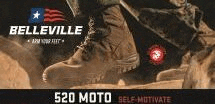BRAND NEW FROM BATTLELINE INDUSTRIES AT SHOT SHOW 2016 / BOOTH N801

Battleline Industries has developed a new Patent Pending FULLY ambidextrous magazine catch / release for all Glock handguns as an aftermarket accessory. This new product from Battleline Industries, is a high speed low drag design allowing the user or operator to have a true fully ambidextrous magazine release from either side of the firearm that is inexpensive, reliable, robust, lightweight, durable, low profile and is a force multiplier in any high threat combat shooting situation. No more switching out a magazine catch to either left or right side… now you can have BOTH! This ambidextrous magazine release is compatible with most holsters currently in use and is ready for duty. Battleline Industries anticipates the release of their first model that will cover all Generation 2 & 3 Glock handguns in calibers 9mm, 40 S&W, & .357 Sig by spring 2016 (Gen. 4 soon to follow). So many other firearm manufactures have had ambidextrous controls for their combat handguns for years. It is time to bring one of the most reliable handguns in the world into the 21st century battlefield, and with the Battleline Industries ambidextrous magazine release, give the Glock handgun new tactical capabilities. Battleline Industries has spent over a year developing and testing this new product and is excited to release it this year at SHOT Show. Battleline Industries is currently looking for new distributors to carry this product, if you are interested please visit us at Booth N801 on the third level in the SHOT Show NEXT exhibitor section.
www.battlelineindustries.com




















































































































